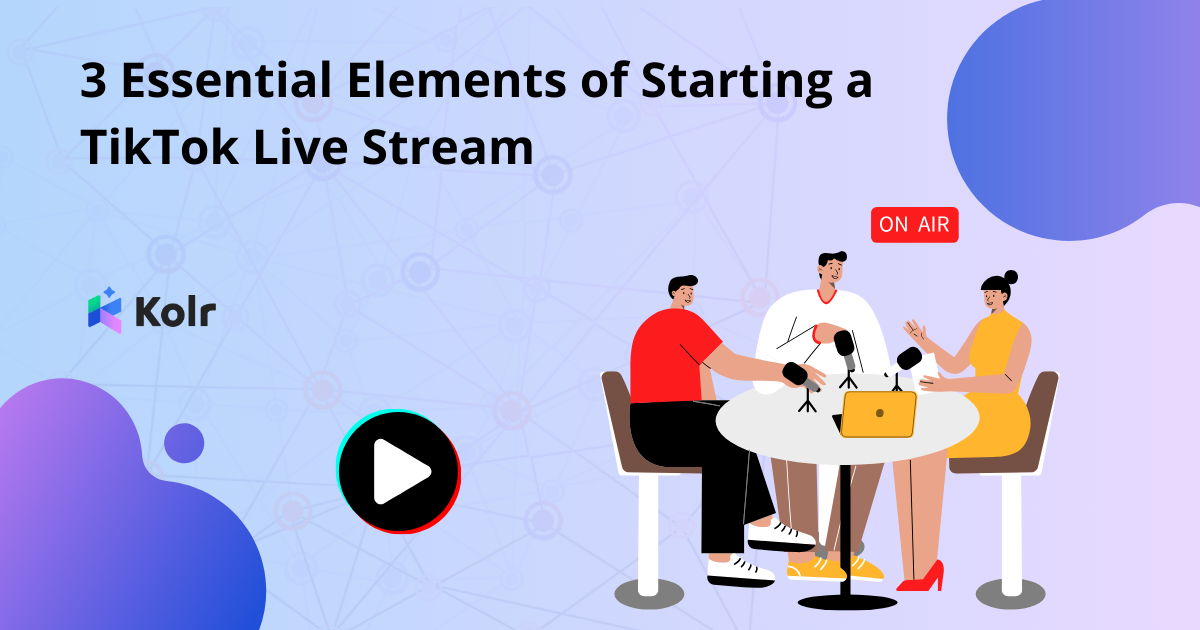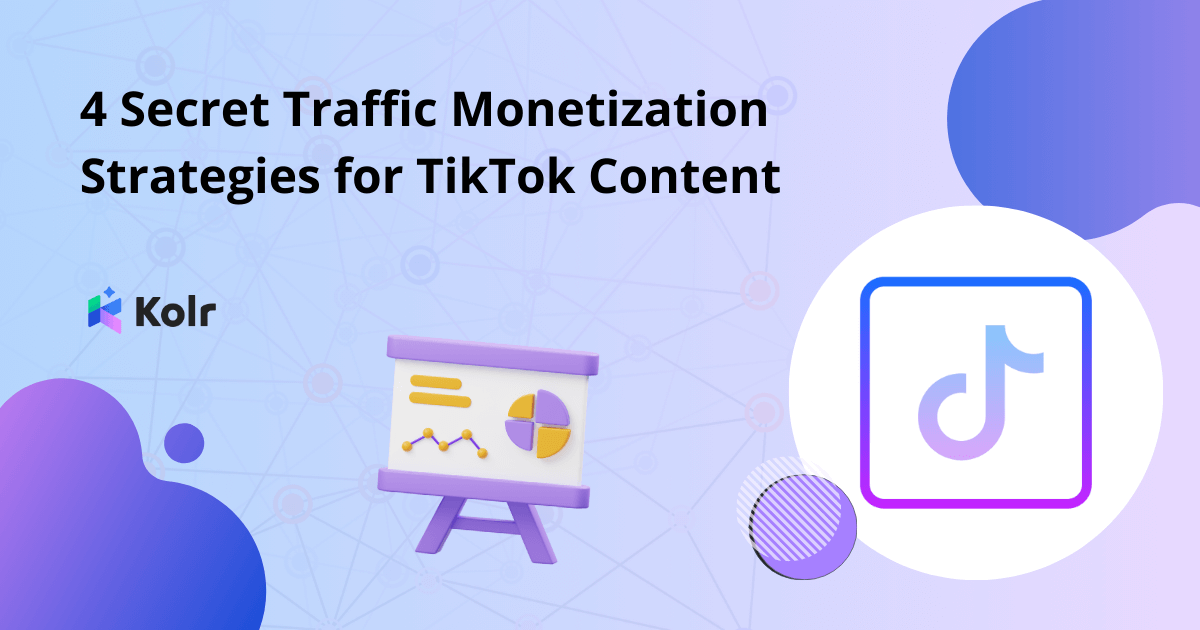According to the Global Digital Report 2023, the number of social media users in Taiwan has reached 84.5%. Therefore, due to the rise of social media, collaborating with influencers has become a necessary marketing strategy. Before negotiating influencer collaborations, it is crucial to draft a comprehensive contract.
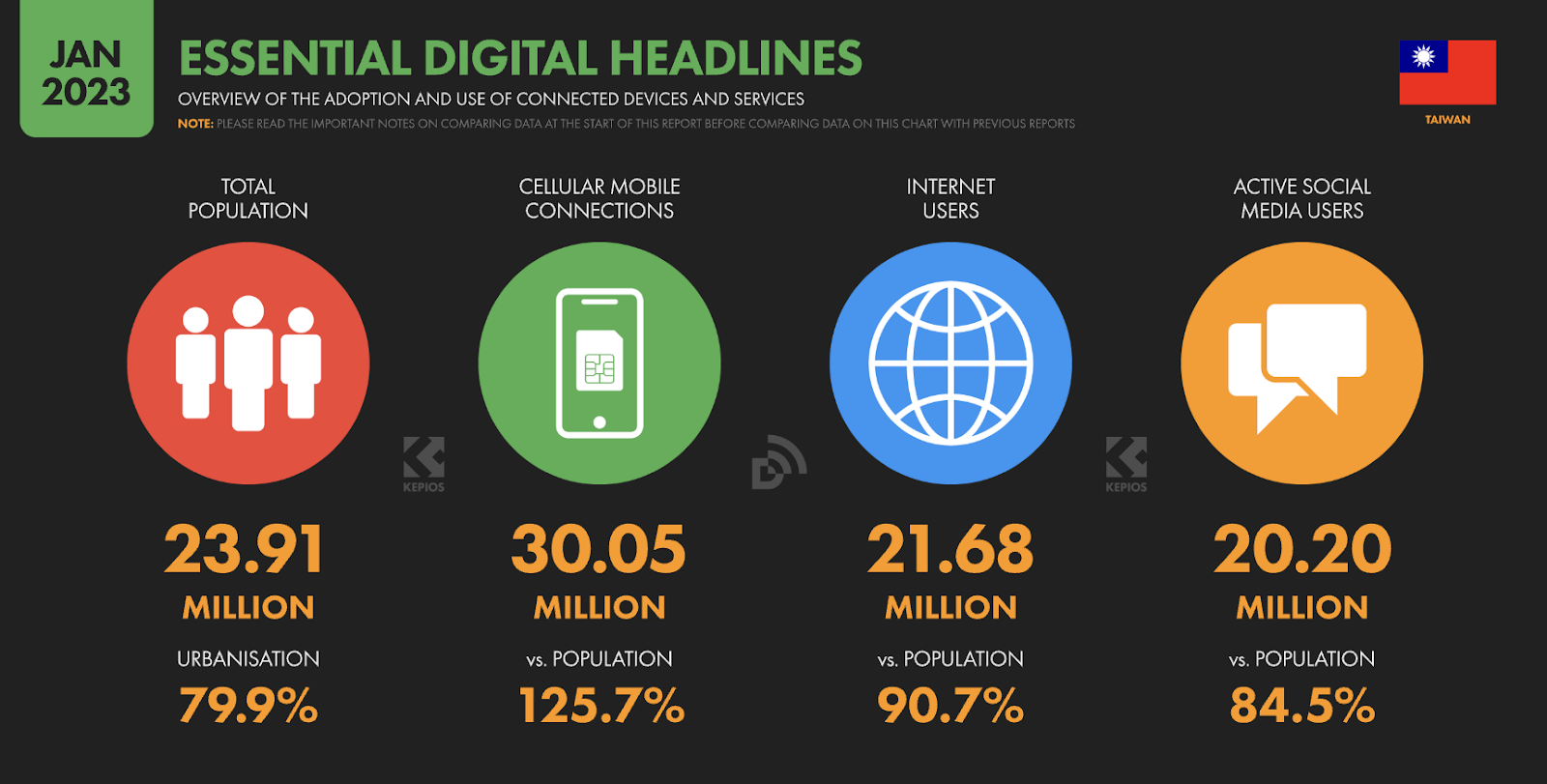
In this article, KOL Radar will provide readers with five key elements of KOL contract templates, list important considerations for signing contracts with influencers, and utilize KOL Radar’s exclusive business case matching feature to help those who are new to negotiating with influencers to quickly understand contract drafting strategies.
5 Essential Contents for a Comprehensive Influencer Contract Template
Key Point 1: Influencer Collaboration Projects | Key Focus of Collaboration with Creators
In the era of booming social media, brands often employ a “multi-platform social media strategy” to reach their target audience through various channels. Creators, based on their own style, also offer a variety of exposure projects for brands to choose from. Therefore, it is crucial to specify the collaboration focal points in the contract. Here are some collaboration project references:
Platform Utilization
Facebook, Instagram, YouTube, and other platforms each have different strengths and cultures. Facebook has more users and covers a wider age range compared to Instagram. For general users, Facebook serves as a hub for news and information, where they can see updates from friends and family, longer articles, and visual content.
Instagram, on the other hand, primarily focuses on visual content, with features like Stories and short videos allowing for rapid exposure. Instagram’s flexible collaboration options contribute to its popularity among both brands and users.
YouTube focuses on long-form video content. Once creators produce videos with enduring value, the cumulative view count is not affected by social media trends. These videos are continuously recommended by YouTube’s algorithm to interested audiences, ensuring long-term viewership.
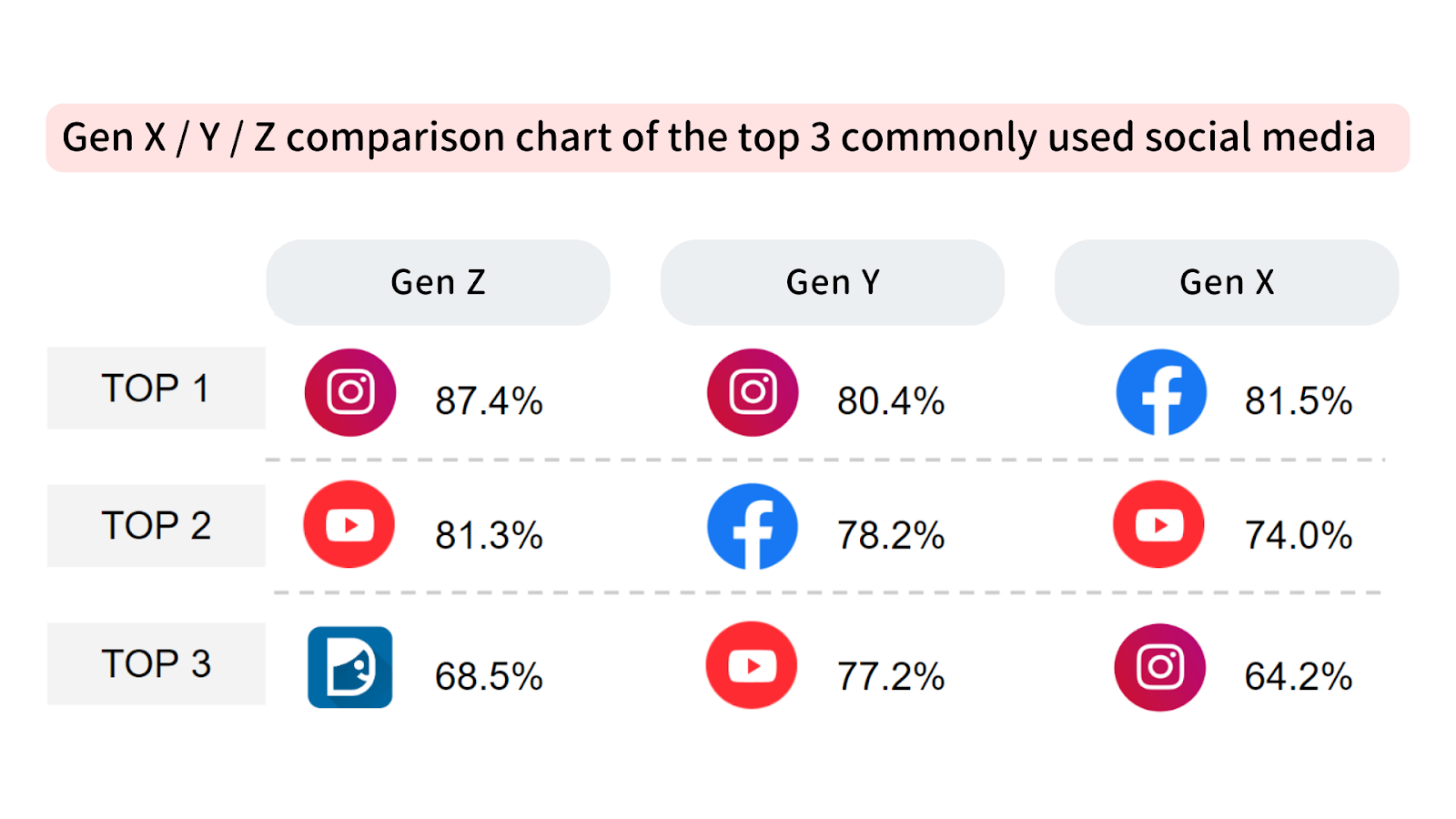
Exposure Formats
Each type of exposure format—such as image/text posts, Stories, video posts, short videos, and long videos—will generate significantly different user interactions and engagement levels. Additionally, there are differences in collaboration pricing corresponding to each format.
Number of Collaborations
The number and format of posts, Stories, and video content can help to achieve marketing objectives through differences in publication frequency and style.
Content Confirmation
Clearly list out the content that requires the client’s approval for confirmation. Provide a detailed breakdown of the aspects where influencers can exercise creativity. This ensures clarity in the contract, preventing potential difficulties in project execution due to differing understandings between both parties.
Schedule Timing
Clearly specify the posting schedule, duration of post retention, and whether reposting is allowed in the contract.
Key Point 2: Project Details | Detailed Specifications of the Project Content
Direction for Copywriting
In addition to specifying the main body images or videos of the posts, it’s important to clearly outline the angle of the written content. This may include details such as “mandatory product features and promotional content to be mentioned,” “whether to tag official accounts and hashtags,” and “affiliate links” if applicable.
Presentation of Posts and Videos
In the detailed specifications for image posts, you can indicate the number of photo drafts creators need to provide and specify the desired color tone or style clearly. For video content, you can outline the expected collaboration approach, including the percentage of the overall video dedicated to the brand, the presentation of the brand logo, and restrictions on featuring competing content.
Influencer Content Authorization
Influencer content authorization refers to the licensing terms regarding whether the post content can be shared or reposted by the brand, whether the materials can be used by the brand for promotional purposes, and the guidelines for collaborations with advertisers.
Key Point 3: Schedule Planning | Creation Timeline and Posting Schedule for Collaboration Content
Image and Text Collaboration
The scheduling for image and text collaborations typically involves three stages: initial draft, final draft, and post-publication. The total timeframe can range from 1 to 3 weeks.
Video Collaboration
The production timeline for video collaborations typically spans from 1 to 1 and ½ months. It usually includes stages such as script development, initial draft video, final draft video, and publication of the video.
Brand Review Time
The time allocated for brand review should also be clearly stated in the contract. When both parties are aware of the content submission and review timelines, they can effectively plan the overall workflow.
Key Point 4: Collaboration Remuneration | Payment of Work
The remuneration details in the collaboration agreement should include the agreed-upon remuneration for the collaboration, whether promotional products are provided as PR gifts, payment methods, and any other relevant payment details.
Key Point 5: Relevant Provisions | Collaboration Obligations and Regulations
Even after detailing the collaboration content, both parties have respective obligations and norms to adhere to. If one party causes project delays or damages their image due to their own doing, measures that both parties can take to address such issues can be specified in this section. In addition, confidentiality clauses, non-competing agreements, and any other provisions that both parties wish to adhere to should be clearly outlined in the contract to avoid any ambiguity regarding responsibilities in the future.
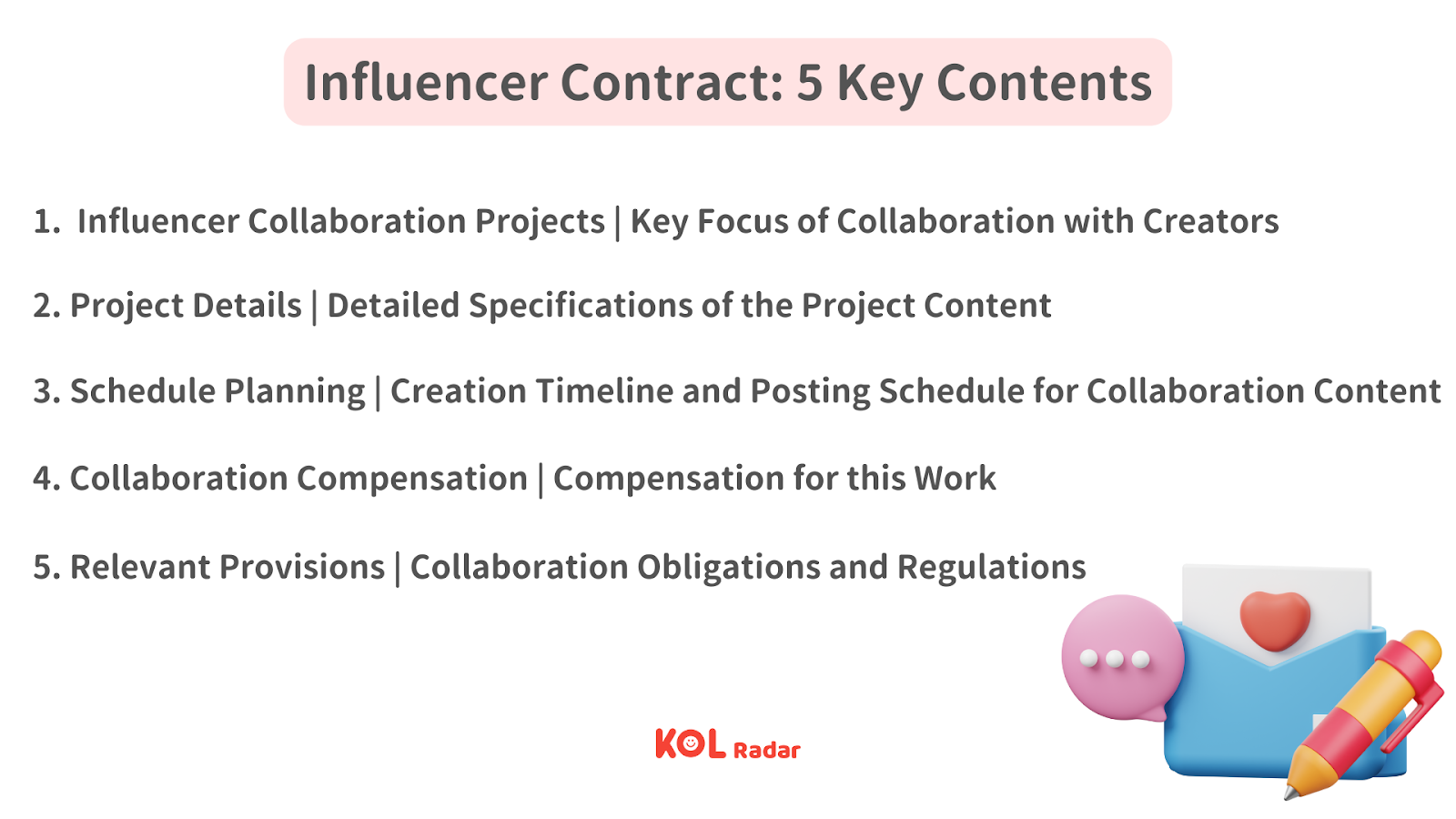
Signing Reminder: 4 Collaboration Considerations
- Ownership of Intellectual Property Rights: As mentioned in section 2, initial intellectual property rights will belong to the creator. Therefore, the retention period and deletion of content must be confirmed in advance and clearly stated in the contract to avoid disputes over rights when the brand needs to use the content for advertising purposes.
- KOL Performance Metrics: Typically, influencers are not obligated to provide backend social media data to the brand after publishing content. If there is a need for metrics such as impressions, clicks, views, or engagement rates, it must be clearly specified in the contract beforehand.
- Product Liability Issues: Recent incidents, such as the explosion of power banks in an influencer-led group purchase event, highlight the importance of clearly defining liability in case of product issues. Particularly in industries like medical aesthetics and health supplements where product liability risks are higher, it is advisable to clearly outline relevant regulations in the contract to avoid legal issues later on.
- Preparation of Labor Payment Forms: Details such as payment terms, invoicing procedures, and compensation amounts need to be specified in the contract. Since some influencers may not have registered companies and typically use labor payment forms for billing, preparing these documents in advance facilitates smooth operations for both parties and prevents delays in marketing schedules.
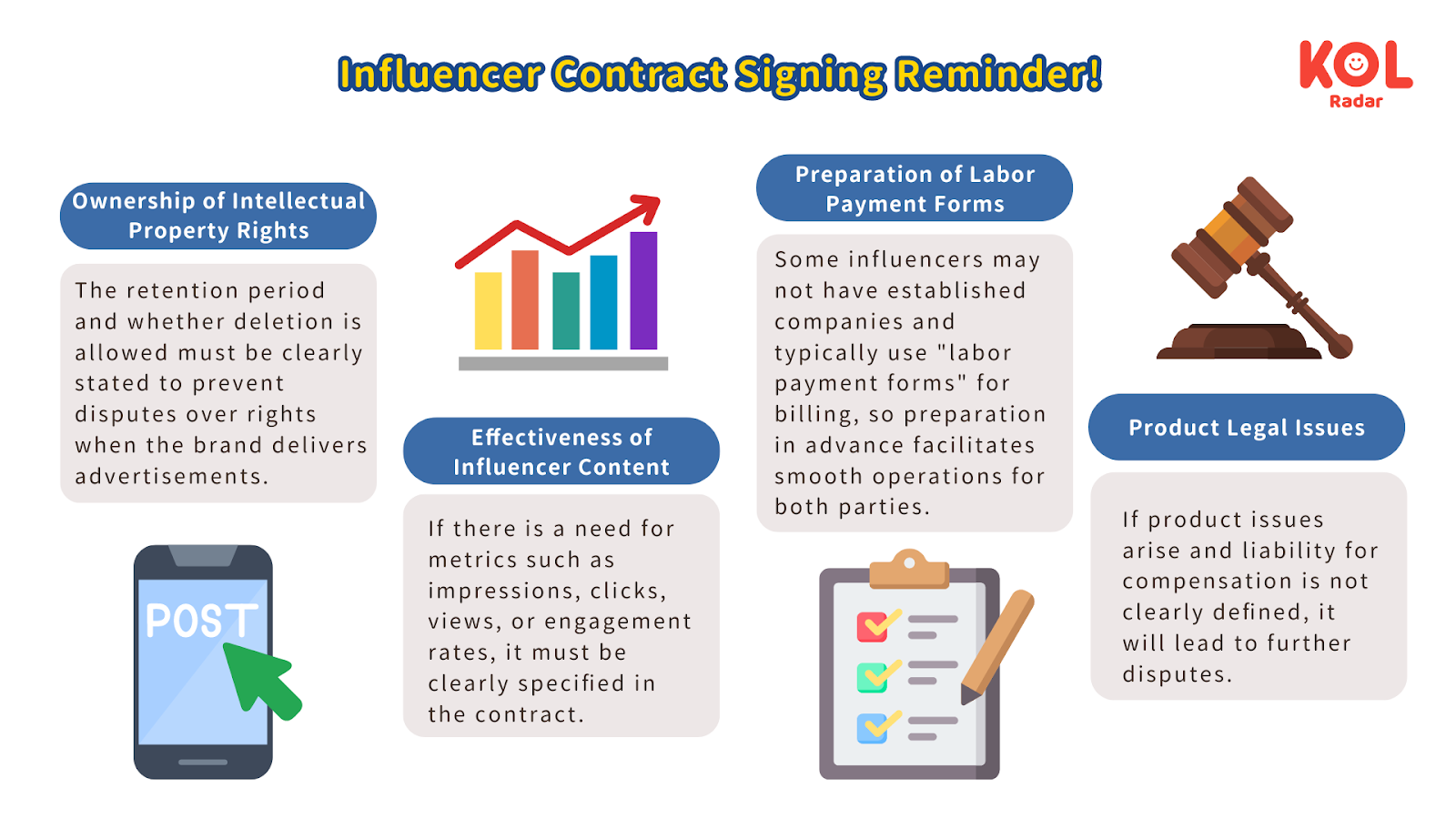
KOL Radar Deep Report Can Assist You in Analyzing Collaboration Effectively
Efficiency Data Tracking Feature: Quickly Obtain Social Media Promotion Data
KOL Radar compiles a Scorecard in its Deep Report, providing a comprehensive overview of performance, including interactive, effectiveness, and conversion metrics. In addition to tracking the social media performance of the influencers involved in the project, KOL Radar automatically aggregates various conversion metrics for the influencer marketing campaign, such as project ROAS, conversion rate, and revenue generated from conversions.

Conclusion
Signing a contract can be considered the first step in collaboration. Despite the complexity of many contract details and provisions, finalizing the contract maximizes the protection of both parties’ cooperation processes and carries legal significance. In addition to the contract framework outlined above, it is still necessary to discuss and communicate according to the actual situation of each creator to draft a customized contract that best fits the project. This approach maximizes the benefits and value of cooperation for both parties, ultimately fostering a long-term and positive working relationship.

If you would like to further understand influencer marketing, feel free to consult KOL Radar for free at https://www.kolradar.com/en/solution.
▶︎ This article may not be reproduced, reprinted, publicly broadcast, or publicly transmitted without permission. The copyright and image rights of the pictures and data referenced in this article belong to their respective owners.

